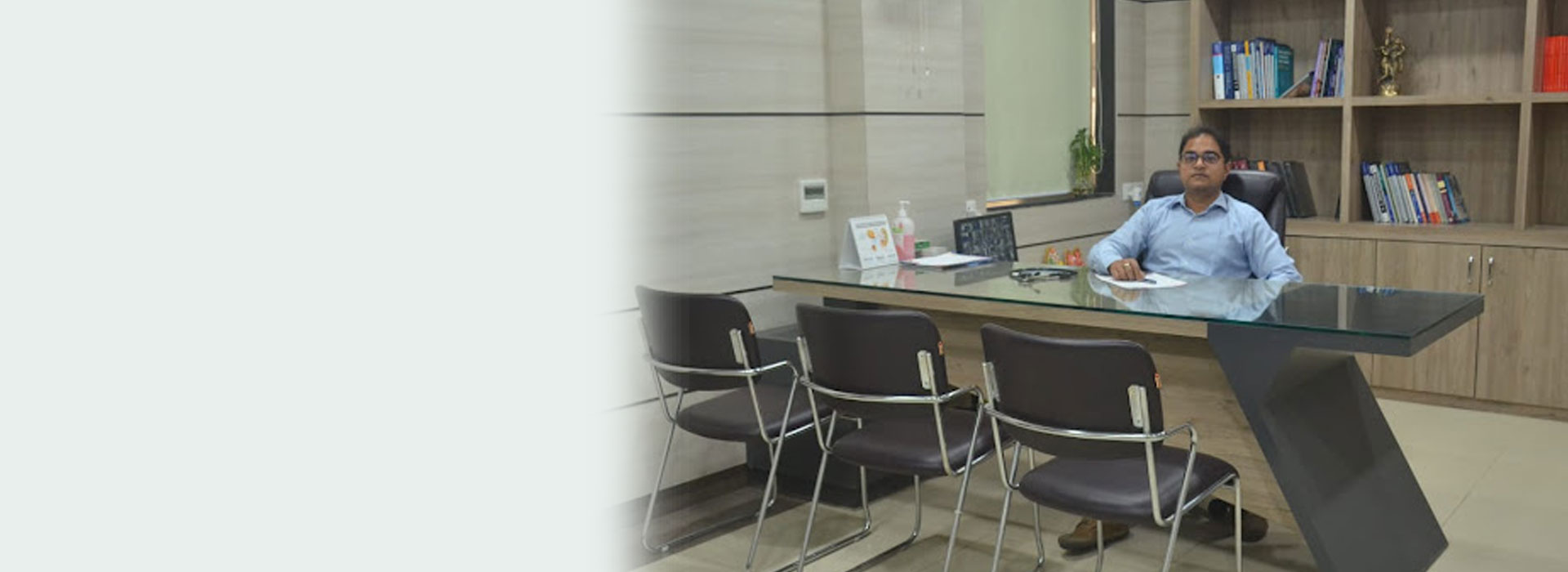Welcome To
Surya ENT Hospital
Surya ENT centre is one of the biggest ENT centres in Lucknow which provides world class ENT treatment to its patients. Surya ENT centre is located at a prime location in Aliganj and is easily accessible from all areas. Surya ENT centre has a world class infrastructure and is equipped with latest technologies. Surya ENT centre has adedicated team of highly skilled and experienced doctors for all kind of head and neck surgeries which comprises of ENT surgeon, cancer surgeon, maxillofacial surgeon and plastic surgeon.
Dr Rajat Rastogi is the owner and director of Surya ENT centre. He is one of the pioneer ENT surgeons of Lucknow who is well versed in the usage of latest technological advances such as LASERS, MICRODEBRIDERS, COBLATIONetc. With the use of such technology, most of the surgeries have become bloodless and require just day-care or single day stay in the hospital.
Dr Rajat Rastogi did his MBBS and MS from one of the most prestigious colleges in India, KG Medical university. He was awarded gold medal for being the best ENT candidate in the year 2007.He has participated in numerous training programmes in India and abroad. Dr Rajat has an extensive experience of almost two decades as an ENT surgeon. He has been performing more than 1000 middle ear procedures, endoscopic sinus surgeries,head and neck surgeries including skull base, endoscopic DCR, salivary gland surgeries every year.


Our Departments
Micro Ear Surgery
Hearing is one of the special senses god has bestowed upon human beings.
Endoscopic Sinus Surgery
Functional endoscopic sinus surgery is a minimally invasive technique used.
Digital Hearing Aid
Hearing is one of the special senses god has bestowed upon human beings.
Thyroid & Head & Neck Sugery
Head and Neck surgery as the name implies includes surgeries right from base of the skull.
Vertigo Clinic
Vertigo, dizziness and balance-related conditions are among the most common health problems.
Allergy Clinic
The Allergy and Asthma Treatment Centre and N.C.Das Immunomedicaid Foundation.
Snoring & Sleep Apnea Clinic
According to the American Academy of Sleep Medicine, an estimated 10 percent.
Frequently Asked Questions
Infection of the sinus cavities often occurs due to inflammation and obstruction of the sinus drainage pathways. Typical symptoms of a sinus infection include facial pain and pressure, nasal obstruction, yellow or green nasal drainage, fatigue and fever. Treatment of a sinus infection may include nasal decongestants and antibiotics. People with chronic sinus drainage may benefit from endoscopic sinus surgery.
Common causes of nasal obstruction include a deviated nasal septum, nasal turbinate enlargement and nasal polyps (benign growths). Deviated nasal septum: The midline of the nose consists of a cartilage and bony nasal septum that separates the two sides of the nasal cavity. A deviation or bend in this structure can be present at birth or can occur following a nasal fracture. The obstruction caused by such a deviation can be corrected by surgically straightening the septum, called a septoplasty. A septoplasty is a commonly performed outpatient surgery done through incisions within the nasal cavity, removing the obstructing portion of bone and cartilage. Nasal turbinate enlargement: The nasal turbinates are three bony and soft-tissue structures lining the sides of the nasal cavity. As part of the normal nasal cycle, the turbinates alternately swell and enlarge. In some persons, the turbinates can be excessively large, resulting in significant nasal obstruction. Allergy treatment, typically with nasal steroid sprays, may help to decrease this swelling. When allergy management does sufficiently relieve nasal obstruction, the inferior turbinates can be surgically reduced. In many cases this can be done as an office procedure. Nasal polyps: Nasal polyps are a type of inflammatory tissue that can grow in the nasal cavity and sinuses. They occur more frequently in persons with allergies and/or asthma. Nasal obstruction is the most common symptom. The sinus drainage tracts may also be blocked, resulting in chronic sinus disease. Nasal polyps are controlled with steroid sprays as well as removal by endoscopic surgery.
Hoarseness, due to irritation of the larynx, is commonly caused by upper respiratory infections, reflux of stomach acid and/or postnasal drip. Upper respiratory infections: People frequently develop a persistent cough following a common cold. A cycle may develop in which episodic coughing results in throat irritation, which causes more coughing and more irritation. The larynx then becomes even more susceptible to other irritants such as acid reflux and posterior drainage from the nose. It is important to break the coughing cycle by maintaining adequate hydration, taking throat lozenges, and avoiding throat clearing. Gastrointestinal Reflux Disease (GERD): Acid from the stomach can reflux up through the esophagus to the larynx. The resulting acid exposure can cause a multitude of symptoms, including hoarseness, throat discomfort, swallowing problems and a feeling of a foreign body caught in the throat. Acid reflux may occur at night, so that sleeping patients do not notice symptoms of heartburn. Treatment of GERD includes antacids, elevating the head of the bed, changing the diet, and avoiding caffeine and alcohol. Postnasal Drainage: Mucous drainage from the nose can cause throat irritation and hoarseness. Nasal steroid sprays and non-sedating antihistamines may help reduce the amount of drainage. Less common causes of hoarseness and voice change include decreased thyroid function, vocal cord paralysis, vocal cord nodules or polyps, and tumors of the larynx. Hoarseness lasting more than four-six weeks should be evaluated by a physician. Otolaryngologists can visualize the both mirrors and flexible fiber optic telescopes.
Snoring is a common problem that may occur alone or in combination with obstructive sleep apnea. Primary snoring: Snoring typically is caused by vibration of tissues within the oral pharynx (the uvula and palate). Nasal obstruction can be another cause. In mild snoring, these measures may help: losing weight, sleeping on your side rather than your back, avoiding sedatives and alcohol. Surgery can reduce the size of the soft tissue of uvula and palate, and also relieve nasal obstruction. At our centre we use coblation technology to remove excess uvular and palatal soft tissue. Obstructive Sleep Apnea: Obstructive apnea is a cessation of breathing that last ten seconds or more. Repeated episodes can significantly disrupt sleep. Manifestations of sleep apnea include snoring, restless sleep, and daytime fatigue. Many advances have been made in treatment of sleep apnea.
No. They come in two types: outer ear and middle ear. Outer ear infections usually occur when children get water in the ear (swimmer's ear). Inner ear infections tend to occur where children congregate in large numbers, such as daycare centers.
Testimonials
Mehraz Khan
Excellent doctor, Trained staff, excellent hospital. All staff good behaviour and very good service.
Prabhat Kumar
This is the best Ent hospital in Lucknow. Excellent trained n cooperative staff which makes this hospital much better than others. Also maintaining very good hygiene.
Mukul Mishra
The hospital has amazing staff, super cooperative & super knowledgeable. Dr. Rajat listens properly, clarifies all doubts, tells all possibilities & recommendations, then without pressure keeps the decision making for you.
Rashid Alim
One of the best Ent hospital in Lucknow. Excellent trained n cooperative staff Very good hygiene Quite environment Special thanks to Dr.Rajat Rastogi Sir











